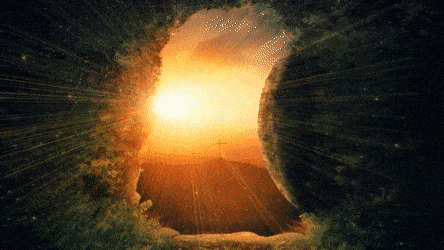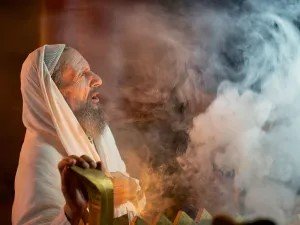2 Samuel 6:1-5, 12b-19
One of my favorite movies ever is the 1984 hit musical drama, “Footloose,” starring Kevin Bacon as Ren McCormack. Ren and his mother move from Chicago to a small town in the rural Southwest to live with Ren’s aunt and uncle. They soon meet Reverend Shaw and his daughter Ariel, who becomes Ren’s girlfriend. Ren has a lot of trouble adjusting to life in a small town, and especially when he finds out that the town banned dancing due to the efforts of Reverend Shaw. As it turns out, Ariel’s brother died in a car accident while driving drunk after a dance a few years earlier.
Ren decides to try to overturn the ban on dancing so that the high school can have a senior prom. He is given the opportunity to go before the town council, and with Ariel’s help he finds several Bible passages that refer to dancing as a way to rejoice, to exercise, and to celebrate. He also quotes a verse about King David dancing.
Here are a couple clips from that scene in the movie:
The story in 2 Samuel 6 about the bringing of the Ark of the Covenant to Jerusalem really begins way back in 1 Samuel 6, when the Ark was captured by the Philistines during a battle with King Saul. The Philistines soon discovered that the Ark had power, destructive power, that unleashed itself against them. The people began to break out with tumors. They moved the Ark from place to place, and everywhere it went the people were afflicted with these tumors. Finally, they decided to return the Ark to Israel. It ended up in the custody of a man named Abinadab, who gave his son Eleazer charge of it.
Many years went by, and the Ark was basically neglected by the King and by the people of Israel. But then King David began to unify his kingdom by establishing Jerusalem as his capital city. In addition to making it a political capital, he wanted to make it a religious center as well, and it made sense to bring the Ark, a symbol of the presence of God, to Jerusalem. It was believed that God’s presence literally rested above the Ark between the figures of the cherubim. And inside the Ark were symbols of God’s interaction with the people of Israel: the tablets of stone on which the Ten Commandments were written, and some of the manna that God had provided for them in the wilderness.
David made the bringing of the Ark to Jerusalem a national affair, and some 30,000 people were a part of the event. There was great joy and a lot of celebration and music, with David and all the people dancing before God with all their might, playing lyres and harps and tambourines and castanets and cymbals. It was certainly a noisy procession! There was not only religious devotion being expressed, but also patriotism. There was both love of country and love of God being demonstrated by this parade of enthusiastic people.
I recently read a book called West with Giraffes, by Lynda Rutledge. It is a novel based on an actual event. It is set in 1938, when the Great Depression is still lingering and Adolf Hitler is threatening Europe and people are still dealing with the Dust Bowl in the Midwest. Two giraffes are brought over on a ship from Africa bound for the San Diego Zoo. They are caught in a hurricane while crossing the Atlantic, but survive. And then they are carried across country by truck. The entire country eagerly follows their progress through the daily newspapers, caught up in a story that is uplifting and exciting. People gather along the highway as the giraffes pass through to cheer them on. The journey takes 12 days, but the giraffes arrive safely to their new home. It was a national event, a 3,000-mile parade! And the excitement reminded me of this procession of the Ark of the Covenant to Jerusalem.
Once they got to Jerusalem, David put on an ephod, which was an undergarment worn by priests, and he began to dance. This tells us that he saw his dancing as part of a religious ritual. The scripture tells us that he danced before the Lord with all his might, leaping and dancing, as all of Israel shouted and trumpets were blown. The people brought the Ark to a tent that had been put up to house it until a permanent home could be built; this Temple would not be built in David’s lifetime, but would be constructed by his son Solomon. But once the Ark was in place in Jerusalem, the city was perceived as both the political and the religious capital of the nation. And people would begin to make pilgrimages to the city, a practiced that has continued to this very day.
I thought about the symbolism of the Washington National Cathedral in the life of our nation. In addition to being an active religious center, with worship services, Episcopal priests, and other religious activities, the Cathedral is also home to many national and political symbols. For example, there are statues of George Washington, Abraham Lincoln, Helen Keller, Rosa Parks, Howard Thurman, and Martin Luther King, Jr. There is the Space Window, which holds a piece of moon rock brought back by Neil Armstrong with Apollo 11. There are even statues of Stonewall Jackson and Robert E. Lee, which have become sources of controversy in recent years. It is both a political and a religious center in our nation’s capital.
The only negative factor in the whole story of David bringing the Ark to Jerusalem is when his wife Michal, referred to here only as the daughter of Saul, saw David dancing and despised him in her heart. She was angry that he was dancing in that fashion and thought that he was humiliating himself and disrespecting the position that he held. For Michal, this was clearly not the time or the place to dance, at least in the way that David had danced.
But I want to say, this was a time to dance. What better time or place could there be to dance than to dance before the Lord? And why would you hold back if you are dancing to worship and honor God? Of course you would dance with all your might! And that might involve leaping! I have come to appreciate and value liturgical dance in the context of worship. I don’t always understand interpretive dance; it is one type of musical expression that I am not really comfortable trying myself. But I enjoy watching others doing it.
But I am someone who likes to move sometimes in worship. Sometimes I just can’t keep still! My feet tap. My hands beat a rhythm on my knees. I want to clap or sway or take a step to the right and a step to the left. Come on, admit it, I bet sometimes you’d like to move, too. I like to dance. I don’t do it well. I am not what you’d call a ballroom dancer. But I enjoy moving to the music. Especially 70s music. But really almost anything. Pennie and I used to belong to a social group in Rhode Island that held about 8 dances a year and we really enjoyed going. I have even done square dancing before; my youth group in church way back in the late 70s is where I learned to square dance, and I still remember the Virginia Reel!
There is a time to dance. There is a time to celebrate. And I think the time is now. Even if we just dance inside, in our hearts, in our spirits, in our souls. As the writer of Ecclesiastes says, for everything there is a season, and a time for every matter under heaven. We have been through months of trauma, tragedy, stress, pressure, anxiety, lockdown, and isolation. Now we are able to gather for worship, family cookouts, boating on the lake, fireworks displays, and other activities. We are not out of the woods yet, but we are reaching the other side. We have made progress. We are getting there. We have things we can celebrate. I am tired of sitting still; I feel the need to kick up my heels and dance! I want to dance before the Lord! I want to worship with my whole body!
I realize that dancing is not comfortable for everyone, especially in the context of worship or church. And I’m not going to have you dancing in the aisles before you leave this morning, so don’t panic! But it’s okay if you want to tap your feet, or sway to the music, or take a step or two to the right and left.
But I hope you will all feel like you are dancing on the inside. Let your spirits and souls soar to heaven. Feel yourselves reach up towards God and sense the music of the angel choir. Hear the songs of the Book of Psalms and remember that many of them are praise hymns designed for public worship.
There is a time to dance. Don’t miss out on it.

























